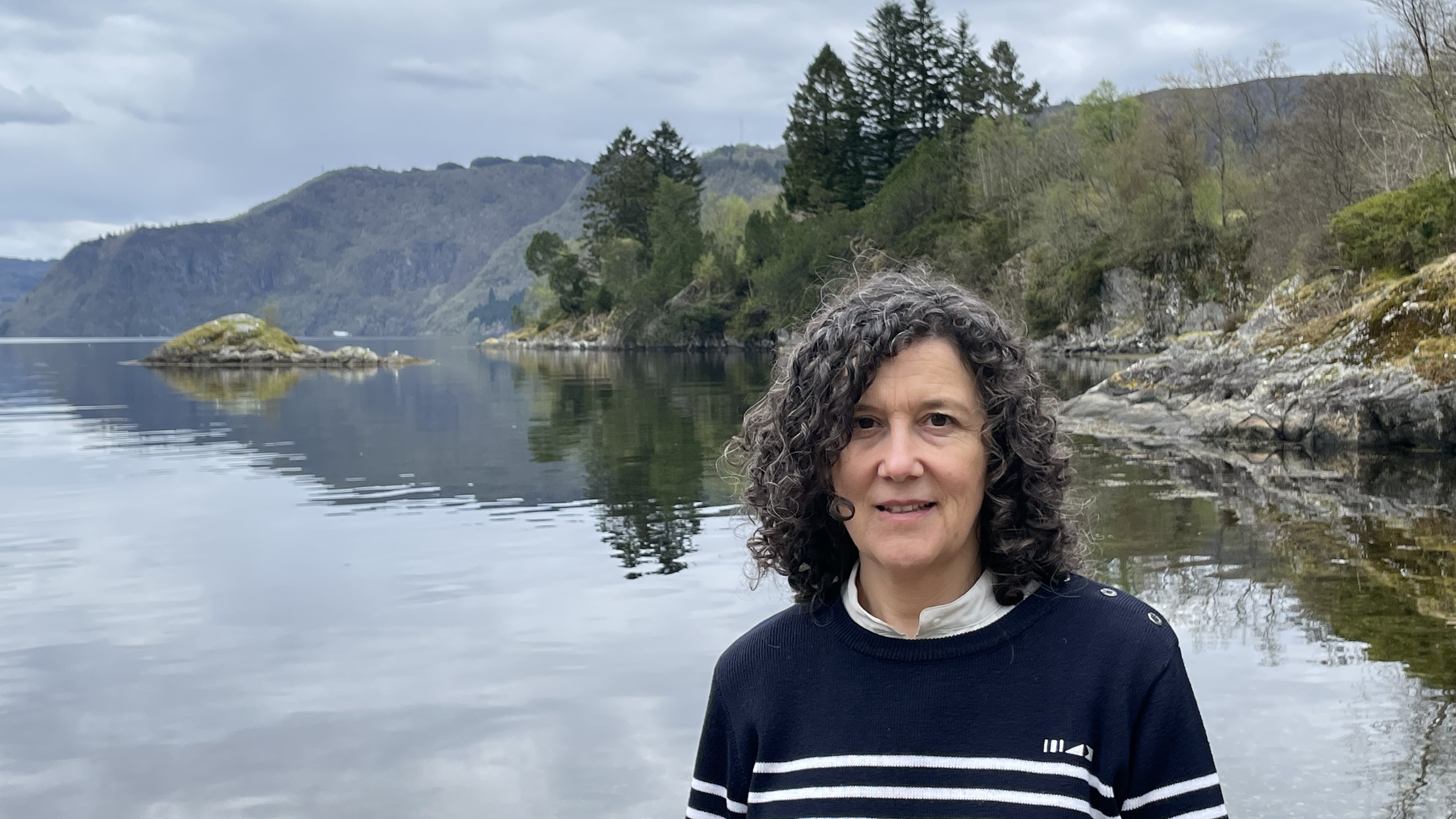Unveiling genetic secrets in the ocean's twilight zone

Not the most beautiful ever, but mighty popular as food for mackerel, cod, wild salmon, squid, and other predators higher up in the food chain. Photo: Caroline Aas Tranang / IMR
Published: 22.04.2025
"We found three main populations that were genetically distinct from each other. One across the North Atlantic, one in Norwegian fjords, and one in the Mediterranean," says marine researcher María Quintela.
Northern glacier lanternfish belongs to the lanternfish family, a group of mesopelagic fish.
Mesopelagic fish dwell in the ocean's twilight zone at depths ranging from approximately 200 to 1000 meters—and have effectively colonized the world's oceans.
"Ninety percent of fish biomass corresponds to small mesopelagic fish. Estimates of their abundance point at as much as a thousand million tons—ten gigatons, which is equivalent to 100 times the annual global fish catch," says Quintela.
Deceiving submarine hunters
Mesopelagic fish stay deep down during the day to avoid visual predators and migrate upward to feed on zooplankton at night. A story from World War II illustrates the magnitude of this migration, which is considered "the largest daily movement of animals on Earth."
Those who first searched for enemy submarines with sonar discovered a phenomenon that seemed utterly baffling. It appeared as if the ocean floor was moving upward in the evening and downward in the morning.
The "ocean floor" was actually a dense population of mesopelagic fish.

Genetic continuum in open waters
Researchers at the Institute of Marine Research (IMR) are now working on mapping the genetic population structure of one of the many species within this "twilight army."
They found almost no genetic variation among northern glacier lanternfish from the North Atlantic.
Despite the thousands of kilometers between the Labrador Sea and Portugal, northern glacier lanternfish across this vast area belong to the same genetic group.
"This suggests genetic exchange across water masses. It fits well with the fact that northern glacier lanternfish are poor swimmers. Both larvae and adults drift with the currents, and in the mesopelagic area of the open ocean, there are no physical barriers preventing genetic exchange over a large area," says Quintela.
Local populations in fjords and the mediterranean
In the Mediterranean, separated from the Atlantic by the narrow Strait of Gibraltar, northern glacier lanternfish are genetically distinct from those in the open ocean. The same is true in the Norwegian fjords.
"Many Norwegian fjords are deep but have shallow thresholds (sills) toward the ocean. These can act as barriers to gene exchange, and therefore we can find local populations deep inside the fjords," explains Quintela.
Research suggests that the Mediterranean also has local populations of northern glacier lanternfish.
"Such local populations have their own genetic characteristics and are adapted to local conditions. In the Mediterranean, for instance, we see a significant genetic difference from east to west," says Quintela and adds:
"The complex ecosystems in the Ionian Sea and the Aegean Sea, with irregular coastlines and semi-isolated, deep basins, create physical barriers that can hinder gene flow and lead to populations becoming isolated from each other."
Are some populations adapted to calmer waters?
The genetic differences between the northern glacier lanternfish from the Mediterranean and the fjords were strikingly smaller than between fish from these two areas and the North Atlantic.
"We don't know why this is the case. One hypothesis might be that northern glacier lanternfish in the Mediterranean and fjords have undergone some form of genetic adaptation to life in calmer waters within partially enclosed water masses," says Quintela.
Of great importance to the ecosystem
Although mesopelagic fish constitute the largest biomass on the planet, this living resource is so far understudied.
"There is little doubt that mesopelagic fish are extremely important for the ecosystem. When they rise to feed on zooplankton and migrate down again, they help move carbon to the seabed. They are part of a biological carbon pump that contributes to sequestering CO2 from the atmosphere," explains Quintela.
Mesopelagic fish are a popular prey for larger fish. Due to their abundance and distribution, mesopelagic fish are the most crucial link between plankton and higher trophic-level fish.
Specifically, the northern glacier lanternfish are essential as food for predators such as seabirds, squid, cod, salmon, and mackerel.
A candidate for commercial fisheries?
"Mesopelagic fish are increasingly mentioned as a potential candidate for commercial fishing. If this happened, one of the multiple conditions required to ensure a sustainable harvest would be to align fisheries stocks with genetics stocks. And for that, we need to understand the population genetic structure of the species," says Quintela.
"It is also particularly important to map unique spawning stocks to prevent the depletion of populations that could be of ecological significance in their respective areas," she elaborates.
Reference
Quintela, M. et.al. (2024): "Genetics in the Ocean's Twilight Zone: Population Structure of the Glacier Lanternfish Across Its Distribution Range". Evolutionary Applications 17: e70032. https://doi.org/10.1111/eva.70032
